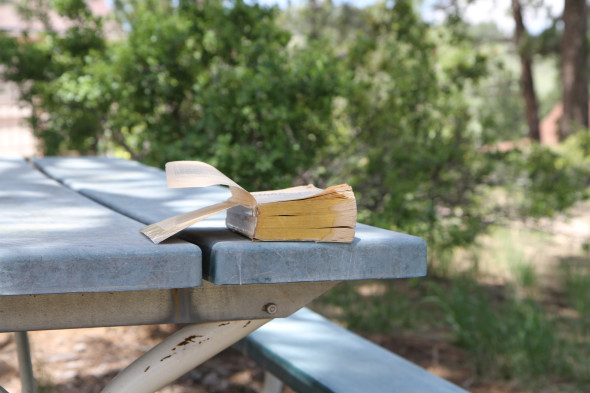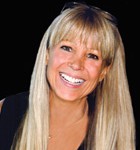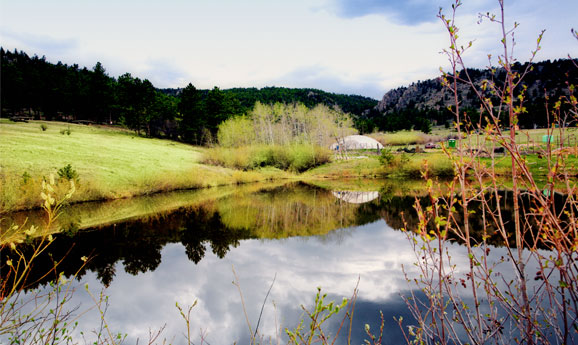By Jamie Woodworth
It’s a widely agreed upon sentiment, among both newcomers and veteran Shambhalians, that this mountain valley has a quality of spaciousness beyond its physical boundaries. It opens up and unfolds more and more as you walk upon it. The feeling is palpable in the wind, and the life—always at play—gregariously engaging. The place has “juice.”
You can feel that presence when you first enter. It’s the drala. It converses with you in the moments you experience in-between yourself and the world. It’s awakened by the people who live here, over many cycles of leadership and life. And, if you follow your intuition, your felt sense of this place, you may be guided towards the place we call Prajna.
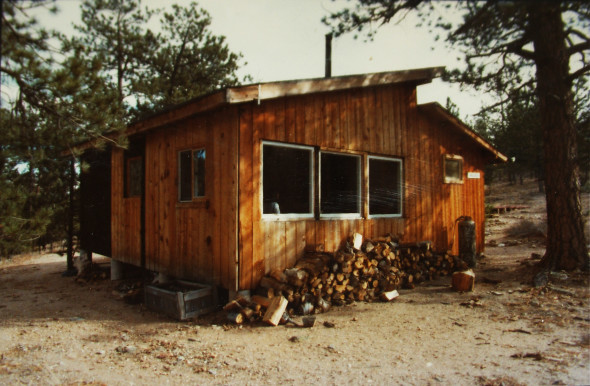 Early photograph of Prajna before remodels done by the Vajra Regent and Sakyong Mipham — provided by Greg Smith.
Early photograph of Prajna before remodels done by the Vajra Regent and Sakyong Mipham — provided by Greg Smith.
Prajna translates roughly as “transcendental wisdom.” The spirit of that word abides in the history of this site. Prajna was the home of the founder of Shambhala, Chögyam Trungpa Rinpoche until 1986, then home of the Vajra Regent, and Sakyong Mipham Rinpoche thereafter, until a fire razed it in 2009. The causes of the fire remain somewhat nebulous. It has been described as a reminder of “the potent truth of impermanence.”
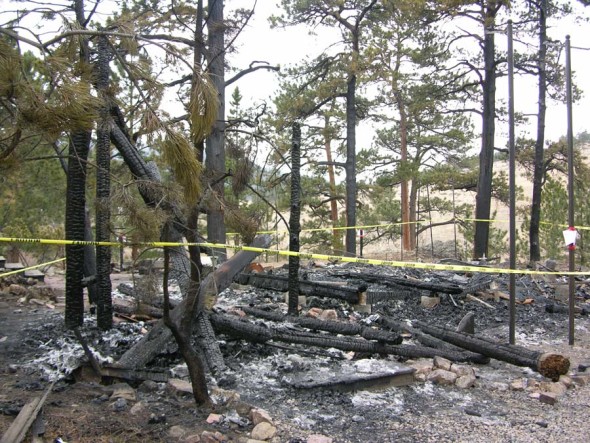 Photo of Prajna after the fire — provided by Denise Weunsch
Photo of Prajna after the fire — provided by Denise Weunsch
Prajna, in its youth, in wreckage, and in emptiness, has enduringly served as a container for authentic encounters. Community members have reflected on the love and guardianship that Trungpa Rinpoche instilled in the heart of Prajna, from its initial settlement up until today. It was a stage to many stories—our teacher’s presence magnetized a vast array of situations. The deck was where he wrote books and chants, held council with his cabinet, and sat down for drinks with his friends and visitors. Prajna’s deck was the window through which he viewed the world, and where the world came to greet him. During his stay, that house received and held the hearts of people who came to share moments of delicate vulnerability. That energy still irrigates relationships unfolding here at SMC. Acharya Noel McLellan reflects,
“Many things happened there that were of personal significance to individuals. Tiny as it was, it was a place where many people met the Sakyong. It always seemed to me to be a part of the tent culture—the walls weren’t solid barriers in a sense. The energy inside the house permeated the whole area.”
Michael Gayner, Executive Director of Shambhala Mountain Center recollects his experience in Prajna at the Seminary he attended in 1994, “that was really where I understood the role of service to the community, and from that, service to all sentient beings, and infinite commitment to being of benefit to the world” (M. Gayner, 2015).
Prajna had a way of defining a path for those who came to both visit and live on the land. The leadership here at SMC has a conviction to keep paths running to and from it, even though its former substance has moved on. We had been discussing a way to reinvent the empty space into something accessible, and ensuring it too can still benefit the world.
Thus began our pavilion project, an endeavor made possible by the generosity of the Shambhala Trust.
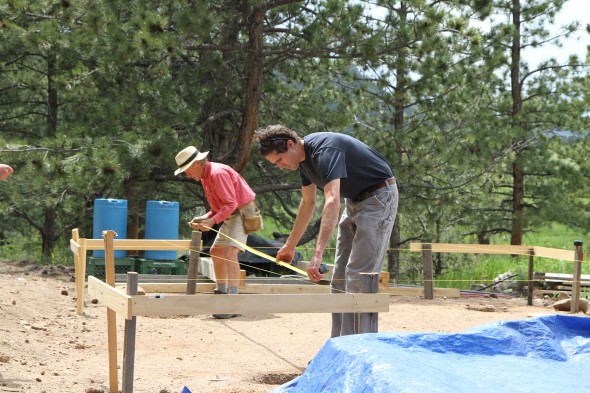 Construction site, 2015 — photo by Jamie Woodworth
Construction site, 2015 — photo by Jamie Woodworth
The Shambhala Trust fundraises and grants money to causes that further the vision of Chögyam Trungpa Rinpoche. Their largesse helps to disseminate the ideal of an ‘enlightened society,’ by uplifting many projects inside and outside the Shambhala Buddhist community. Some projects include: The Prison Mindfulness Institute, and the Reciprocity Foundation. John Sennhauser, an original member of the Trust, evoked a special kind of enthusiasm for the Prajna reclamation project in particular, “the current Shambhala Trust was founded in 1995, you know—and, it happened at a meeting in Prajna. I was thinking about this to myself the other day. Things really came full circle—it’s great.” More than that, it’s a homecoming for many trust members, who themselves lived in tents at the Prajna site. There’s a certain air of poignancy coming back 20 years later to the memory of their old lives, and old times with the Sakyong. Funding this project, beyond spreading the Shambhala vision, is a way of dusting off that piece of their hearts, two decades later. Moreover, it’s a service to all the current volunteers, staff, and visitors fresh on the land, who can now enjoy Prajna in a whole new way.
There was a lot of intentionality behind the choice of the pavilion. When Sakyong Mipham Rinpoche visited the crumbling remains of his old house with John in 2009, he voiced how great it would be to let this land return to nature, and reclaim it as a place where people could sit, contemplate, and rest. He laid the groundwork for the grant proposal to the Trust, and the vision our leadership outlined in it. Michael Gayner described the pavilion as a potential “pilgrimage site” where people could reconnect with the Drala that flowed through Trungpa Rinpoche’s court. Placing a pavilion in this spot is a way of re-energizing Prajna, and making the Dralas available once again. Attracting people to this spot will accomplish the broader goal of reawakening the naturally present magic that Trungpa Rinpoche illuminated so many years ago. The Prajna project will be ultimately completed with the construction of a Stupa some years in the future, once the overall energetics of the land “are proper.”
With this in mind, a lot of consideration went into construction and design. Eva Wong, our Feng Shui consultant, provided guidelines on how to orient the pavilion, and how to stylize it. Danny Boyce, our project coordinator, described how she encouraged the use of certain design elements to make sure it seamlessly conducted the flow of energy. The materials were also all locally sourced from the land, and from an additional parcel of private property about 25 miles away from the SMC property line. The pavilion contains a total of 35 timbers, which were meticulously chosen by our leadership team, Peter Haney, Jared Leveille, Sophie DeMaio, and Josh Halper. Four rocks from the land were also collected to be “scribed” onto the bottom of the posts, to provide an organic transition from the wooden posts down into the earth.
The thoughtfulness of the construction is a manifestation of SMC’s commitment to not only accomplish a job, but do profoundly good work, Michael commented. Danny outlined how the whole structure was masterfully engineered—the pavilion is equipped to hold at least “three feet of snow and twenty people on it.” It will even have a handicap ramp. It’s definitely an edifice that will withstand the test of time, and be enjoyed by many people.
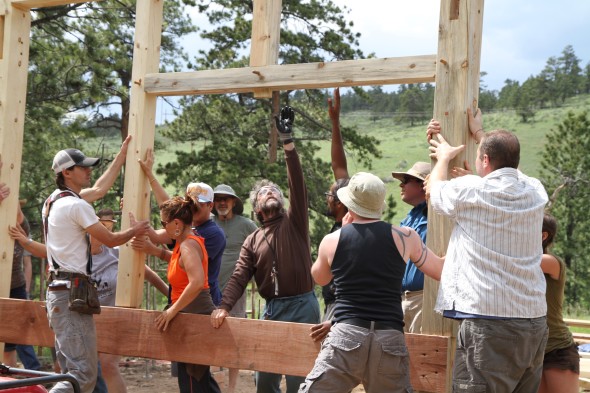 SMC staff constructing the pavilion, 2015 — photo by Jamie Woodworth
SMC staff constructing the pavilion, 2015 — photo by Jamie Woodworth
The moment when the frames of the pavilion were raised was itself a demonstration of the love and energy that’s still present at Prajna. Lifting the sides together required the participation of many members of the community, and more people actually showed up than needed. For two hours, a sizable group of staff rallied and pieced together a collective vision. Everybody was pretty proud to have their hands in it.
Michael, reflecting upon that teamwork, said with a smile, “our workers brought in a tremendous amount of heart and skill to Prajna.”
Really, the whole endeavor speaks to not only the continuing spirit of the land there, but also the strength of the community that sustains the beauty of Shambhala Mountain Center, in both material and non-material ways.
Our teachers nurtured a powerful heritage for Prajna. That cadence of life present during their residence is a thread we’re weaving through this present moment, this community, and into the fabric of what Shambhala has yet to become. One Summer evening, about 16 years ago, the Sakyong was standing on the deck of his old house, writing this poem, reflecting on the perfection of being in this place:
A drink from mountain stream—
Lost water comes to haunt me.
Surrounding loneliness,
Mind peers into vast blue sky.
A distant yogin’s love song plays upon my ears.
The silence of this valley
Sings the cry of liberation
Mind paces like a caged tiger.
Heart drowns in inexpressible chasm.
Let us bring it all to the path of bodhi.
Let us climb this mountain of uncertainty.
Look!
Look again!
The sun is rising.
Its golden-orange hue commands us to exhale.
Sakyong Mipham Rinpoche
26 July, 1999
As our lives collide and mesh, we’re looking forward to the poetry of our future—and some new memories housed in this sanctuary, built by the hands of our friends.
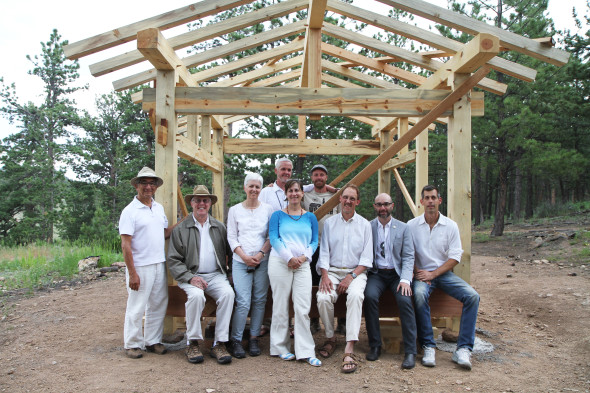 The Shambhala Trust at Prajna, 2015 — photo by Jamie Woodworth
The Shambhala Trust at Prajna, 2015 — photo by Jamie Woodworth
~~~
 Jamie Woodworth earned her Bachelors of Arts in Environmental Studies and Women and Gender Studies from the University of Colorado at Boulder. Currently, she is a Masters student in Human Ecology at Lund University in Sweden. Her ethnographic research in Iceland couples ecological thinking with feminist theory. Understanding sustainability from a solutionary point of view is the pivoting point for her studies. In the past, Jamie has worked as an outreach coordinator for CU’s Environmental Center, a manager for Colorado Public Interest Research Group, and interned for the Chasing Ice film crew.
Jamie Woodworth earned her Bachelors of Arts in Environmental Studies and Women and Gender Studies from the University of Colorado at Boulder. Currently, she is a Masters student in Human Ecology at Lund University in Sweden. Her ethnographic research in Iceland couples ecological thinking with feminist theory. Understanding sustainability from a solutionary point of view is the pivoting point for her studies. In the past, Jamie has worked as an outreach coordinator for CU’s Environmental Center, a manager for Colorado Public Interest Research Group, and interned for the Chasing Ice film crew.
 From TRIUMPH OF THE HEART: Forgiveness in an Unforgiving World by Megan Feldman Bettencourt. To be published on August 11, 2015 by Hudson Street Press, an imprint of Penguin Publishing Group, a division of Penguin Random House LLC. Copyright © 2015 by Megan Feldman.
From TRIUMPH OF THE HEART: Forgiveness in an Unforgiving World by Megan Feldman Bettencourt. To be published on August 11, 2015 by Hudson Street Press, an imprint of Penguin Publishing Group, a division of Penguin Random House LLC. Copyright © 2015 by Megan Feldman. Megan Feldman Bettencourt is an award-winning writer. She began her career as a Central America-based freelancer and earned a master’s degree from the Columbia University Graduate School of Journalism in New York. Megan’s features have appeared in magazines such as Glamour, Details, and 5280: The Denver Magazine, and in newspapers including Newsday and the Dallas Observer.
Megan Feldman Bettencourt is an award-winning writer. She began her career as a Central America-based freelancer and earned a master’s degree from the Columbia University Graduate School of Journalism in New York. Megan’s features have appeared in magazines such as Glamour, Details, and 5280: The Denver Magazine, and in newspapers including Newsday and the Dallas Observer.


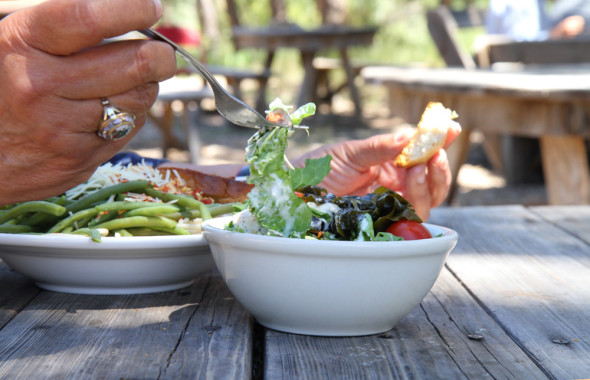

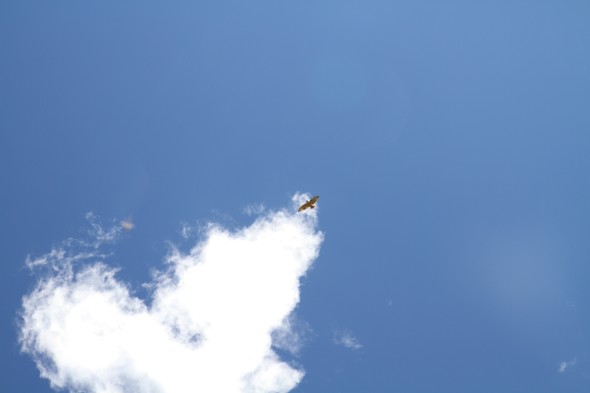 Photo by Jamie Woodworth
Photo by Jamie Woodworth








